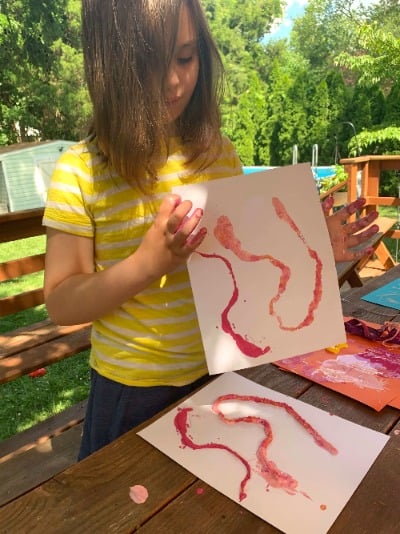Nature Science: Worm Activities for Preschoolers
This is the first in our series of Nature Science Activities blog articles.
Worm Activities for Preschoolers
Wiggling Wonderful Worms! Super and slimy, worms are an easy animal to observe and offer a great starting point to talk about all-natural recycling. Composting with worms as a family or classroom is easy, can be done indoors or outdoors, and can be adjusted based on the size of the space you have available. Below you'll find some great resources for starting your own colony of wormy recyclers.
Tips for observing your worms to make sure that your little scientists can learn without causing harm to your wiggling guests:
-
Handle them as little as possible.
Everyone knows worms are slimy. That slime is super important! Worms breathe by passing the oxygen (and then carbon dioxide) through their skin and the slime or mucus on their body helps them to do that. Handling them for too long can mess with their ability to breathe properly. It’s good for scientists to touch animals like worms- you can learn a lot about worms by letting one crawl across your hand- but keep handling sessions short, switch worms often if you have a lot of little hands that want to touch, and make sure everyone washes their hands before and after with soap and water (not hand sanitizer).
-
Don’t leave them in bright light.
Worms don’t have eyes, but they can sense light. They prefer the dark under the soil. Making good observations does require lighting, so when you’re observing your worms, keep the sessions short (10-15 minutes in the light will not cause permanent damage to your worms) and make sure you have your magnifying glasses ready before you bring your guests out into the light.
-
Bring some dirt (and keep it wet)
Having a moist, dark place for your worms when you bring them in for observation solves most of the problems you could encounter. Simply bring some of the compost or soil inside with the worms and mist it with water. This will help keep them wet and breathing as well as give them a safe, dark place to retreat to. Bonus: You can watch these determined diggers do their stuff!

Worm Painting
Supplies needed:
Paint (any color- but washable is best!)
String, yarn, twine, shoelaces cut in 2-5 inches pieces. If you want longer or shorter worms, cut them to your desired length
Paper (a piece or two per person)
A bowl, cardboard, or paint palette to hold your paint
Instructions:
- Add your string “worms” to the paint. Stir them up and make sure they are covered in paint.
Exploration Questions: Are real worms wet or dry? What colors do you think worms in the wild are? Do you think all worms look the same?
- Lay a sheet of paper down. Arrange your painted, string worms on the paper.
Exploration Questions: How do worms move? Do their bodies stay length as they move around? How do worms fit into tight spaces? How would it feel to be a worm? If you were a worm for a day, what would be your favorite part?
- Take a second sheet of paper and lay it over the painted worms. Press lightly on the top paper. Peel it back slowly. You’ll have two paintings! Remove the strings, let dry and add details to your paintings like segment lines on your worms, tunnels and roots, and other animals living in the dirt.
-----
As you can see, exploring worms at home or in the classroom can be fun and educational.
Share your worm activity photos or videos with us on social media, tag us on Facebook or Instagram.
If your students love worms, they will enjoy these books about worms:
We Dig Worms by Kevin McCloskey
Up in the Garden and Down in the Dirt by Kate Messner
Worm Weather by Jean Taft
Wonderful Worms by Linda Glaser
And finally, here are those composting resources:
Backyard Composting: stopwaste.org/
Composting in the Classroom: unclejimswormfarm.com
Check out the Nature Science Activities blog articles about Fun with Fruits & Seeds.
 Hollie is certified K-8 teacher who has been educating in the informal education field since 2005. She has developed and implemented countless exciting STEAM programs for families, classrooms, and teachers focused on the natural world, the scientific process, and ancient life. Her professional passions are inquiry, whole family learning, experiential learning starting in early childhood, and the intersection of literacy and science instruction.
Hollie is certified K-8 teacher who has been educating in the informal education field since 2005. She has developed and implemented countless exciting STEAM programs for families, classrooms, and teachers focused on the natural world, the scientific process, and ancient life. Her professional passions are inquiry, whole family learning, experiential learning starting in early childhood, and the intersection of literacy and science instruction.
She has recently developed a community-based program that encourages families to use dramatic play to learn science, increase literacy skills, and have fun together for which she received the Drexel University Presidential Award for Civic Engagement. She is most proud of her work on a popular science storytelling program for preschool families and classrooms that combines a book club format with engaging programs, innovative curriculum, and a hysterical puppet storyteller.
